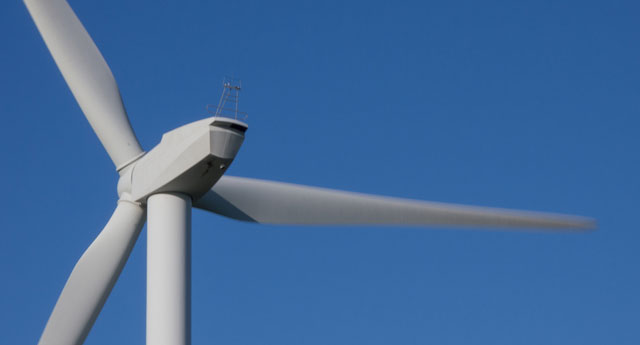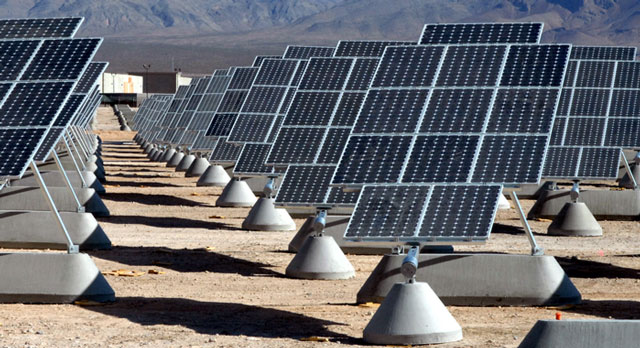
The much-awaited updated South African Integrated Resource Plan for electricity has been released for comment.
The document makes far-reaching proposals about the target energy generation mix leading all the way to 2050. In particular, the plan pronounces on the future scale and role of nuclear energy and renewable energy technologies. The appropriateness of these has been debated a great deal in the country in the past few years.
If adopted in its current form, it will lead to a 15-year delay in the construction of new nuclear power plants. But it will also result in a greater reliance on gas, solar and especially wind power than anticipated five years ago in the previous plan 2010-2030.
The proposed plan has already been the subject of intensive scrutiny and debate, with those for and against lining up to make their points. The state utility Eskom is unhappy about the suggested delay in building a much bigger nuclear capability and has even threatened to ignore key recommendations. For their part, advocates of renewable energy argue that the plan underestimates how much less expensive these technologies will be in the next 20 to 30 years.
An earlier version of the plan, released in 2011, envisaged that between 2010 and 2030 South Africa’s electricity demand would grow from 255TWh (terawatt-hours — a unit of energy) to 436TWh. This was to be achieved through the completion of two very large coal power plants, Medupi and Kusile, which would supply the bulk of the shortfall. Other contributors would be nuclear, for which new plants would need to be built, and the establishment of a new renewable energy generation network of wind power and solar power.
But a great deal has changed since then.
Firstly, the growth in energy demand has proved to be lower than projected. Secondly, the cost of renewable technologies has dropped faster than expected. In particular, the price of solar photovoltaic electricity allocated under the country’s renewable energy procurement programme fell by 75% between 2012 and 2015.
These developments were captured in an updated version of the 2011 plan that was prepared in 2013. It recommended that, in view of these changing conditions, there was no longer a need to kick-start a nuclear build programme immediately. It also recommended that a decision on whether or not to embark on an expensive expansion of the nuclear reactor fleet could be delayed for several years.
But this updated version of the plan was never promulgated. This left the door open for a fiercely pro-nuclear lobby which is in favour of a highly lucrative nuclear expansion programme. This issue has developed into a political hot potato. The central argument is that the push for nuclear goes against economic common sense and that it’s being pursued for the benefit of politically connected individuals.
The nuclear build issue has come to feature prominently as one of the important drivers of what is referred to as “state capture” of some of the country’s large institutions.

The latest version
The draft update of the resources plan advocates the following most likely scenario, referred to as the “base case”.
- Electricity demand between 310TWh and 355TWh in 2030 (about 100TWh lower than envisaged in the 2010-2030 plan) with demand rising to between 390TWh and 530TWh in 2050. This is based on projection models developed at the Council for Scientific and Industrial Research.
- The construction of 37,4GW of wind capacity and 17,6GW of solar photovoltaic capacity between 2020 and 2050.
- The gradual decommissioning of most existing coal power stations by 2050 in line with international carbon emission agreements.
- A substantial increase (35,3GW) in electricity generation from gas. Due to the high cost of gas it is generally used only as a backup. It would in any case contribute only about 7% of total energy generation.
- The construction of just over 20GW of nuclear power. But this would only gradually come on line between 2037 and 2050. Given that construction of the plants would take 10 years the decision to go ahead with the nuclear build could still be delayed for another decade.
Unsurprisingly, the nuclear industry and its supporters have reacted very negatively to the new draft.
Strong nuclear advocates in Eskom have gone so far as to defiantly declare that they will invite nuclear construction proposals before the end of the year.
But Eskom’s defiance is unlikely to lead to anything substantial. This is because the state utility is facing both a credibility crisis and its finances are in poor shape.
On the other hand, advocates of faster growth in renewables have criticised two fundamental assumptions underpinning the “base case” model.
They argue that the model assumes renewable tariffs slightly higher than achieved in the last allocations made under the renewable energy procurement programme. Only by 2030 do these drop a further 20% for photovoltaics and 9% for wind. But given recent trends and projections, there’s a strong likelihood that future renewable energy costs will be lower than that.
The “base case” also assumes a limit to how many solar and wind plants can be constructed annually. But based on past interest and delivery by private renewable power producers, far greater annual developments are possible.
Several researchers have shown that by applying lower renewable tariffs and removing annual construction limits, renewables can make up a much greater proportion of the energy mix, and that new nuclear might not even be needed in 2050.
Future energy demand
The new energy plan is now subject to public input. It is due to be adopted by government in four months’ time after improvements and further scenario modelling has been added.
Even after adoption, updates will need to be done regularly, ideally every two years since even current projections could be overestimating future energy demand considerably.
This is particularly true given that energy consumption is declining in most developed countries because of advances in technology and energy-saving initiatives.
If the energy sector is managed correctly, the current South African energy crisis may not be as far reaching as is often assumed.![]()
- Hartmut Winkler is professor of physics, University of Johannesburg
- This article was originally published on The Conversation




